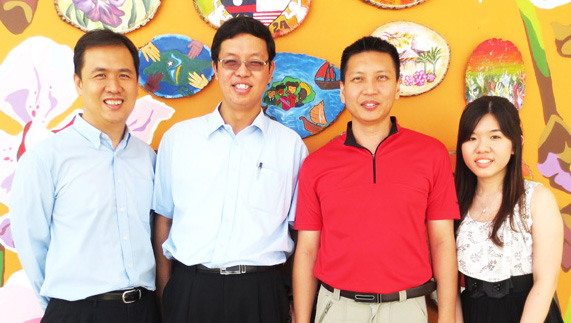Why Singapore’s English Teachers Should Embrace Singlish, Not Fight It
Is it time for Singaporean educators to embrace Singlish as a legitimate learning tool? What the Research […]
Read More
Can students learn anything about science from the media content they consume every day? The answer is a definite yes, and here’s how it can be done.
Do your students ever ask, “Why do we have to learn Physics?” Physics is all around us, but this may not always be obvious to them.
To help students make connections more readily between their everyday life and what they learn in class, some teachers use the context-based learning (CBL) approach.
“The idea is to move away from learning isolated and unrelated concepts,” explains Dr Tang Kok Sing.
Instead, concepts are learned in relation to common and real-world situations. For example, the nuclear accidents in Japan and Russia can be used to introduce the topic of nuclear activity to students.

The approach certainly makes learning more relevant and meaningful. But there are some limitations to how CBL is being implemented.
One is that the contexts in the curriculum are usually chosen by the teachers and curriculum planners. “Underlining this is an assumption that teachers know what kinds of contexts genuinely appeal to youth,” Kok Sing says.
Rockets, aeroplanes and balls are commonly used to illustrate Physics concepts, such as projectile motion. But Kok Sing finds that some students don’t relate well to such real-world examples.
What, then, might students be interested in? To find out, he and his research assistant Jeslyn Lee asked Physics students in Innova Junior College to each choose a media artefact with content related to both their personal interests and a Physics concept. It could be anything, from a newspaper article to a YouTube video.
“It’s also a test for them to recognize the connection between what they’re familiar with and what they’re learning in Physics,” Kok Sing notes.
The diversity of what students chose was an eye-opener for the researchers. They were interested in sports, martial arts, skateboarding and dance, music harmonics, forensic science and sci-fi shows, just to name a few.
The students came up with a scientific question based on the media artefact they had chosen, devised an explanation for their own question, and also critically evaluated the media they had chosen.
“They know that in a lot of media, some content isn’t accurate or scientifically correct,” Kok Sing says. How to critique the media content that they encounter in their everyday life thus becomes a learning point too. Kok Sing and his team are now working on identifying the strategies students employ to interrogate media content and evaluating their facility in doing so.
Finally, the students presented their work in the form of a glog, which is a graphical blog or digital poster. They were graded for the quality of their question, the depth of their research, how they evaluated the reliability of the media source, and the design of their glogs.
The researchers and teachers were impressed by what the students came up with. One of the best glogs was by a student who investigated a murder case presented in Fringe, a sci-fi TV series.
– Tang Kok Sing, Natural Sciences and Science Education Academic Group; Innova Junior College teachers Ong Chee Wah and Alvin Ng E-hian; and Research Assistant Jeslyn Lee
In one episode, a woman was killed by an electromagnetic bomb, and the student wanted to find out if this was really possible. By applying his understanding of electromagnetic forces and reading up on it, he went on to hypothesize about the design and effect of the electromagnetic bomb. From his calculations, he concluded that the bomb is theoretically possible, but not practical in real life.
Some students were surprised at how relevant Physics is to their interests. “Skateboarding was something I didn’t expect to be related to Physics,” a student commented, “because in the lecture notes they always try to tell us to imagine an aeroplane or a ball in projectile motion.”
Through this project, Kok Sing hopes to open up some space in the classroom for students to pursue their own interests. “Youths need to have the agency to search for and talk about their own interests,” he says.
To the teachers, he advises that a good way to engage students would be to “listen to their voices and incorporate what they have learned outside the school into what they learn in school.”
By creating the space for students to pursue their interests, he hopes they can make a stronger connection to what they learned in school and ultimately identify their own purpose of learning.